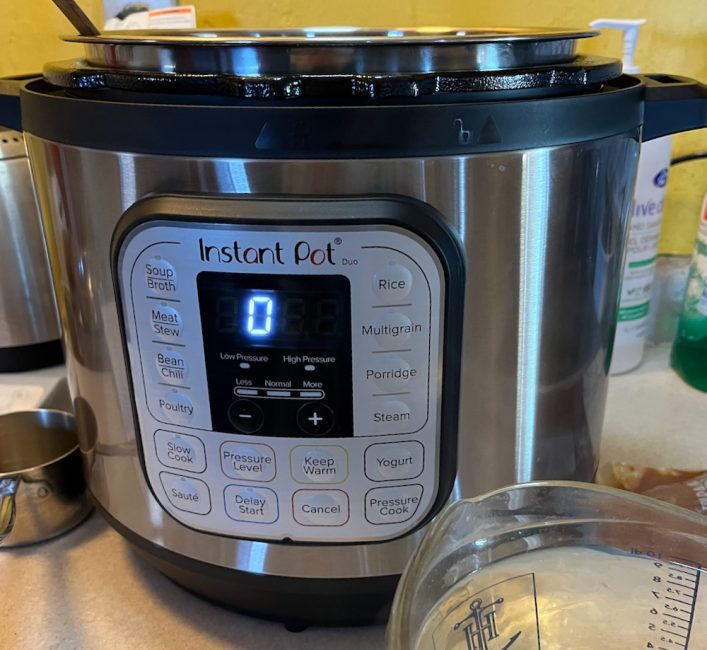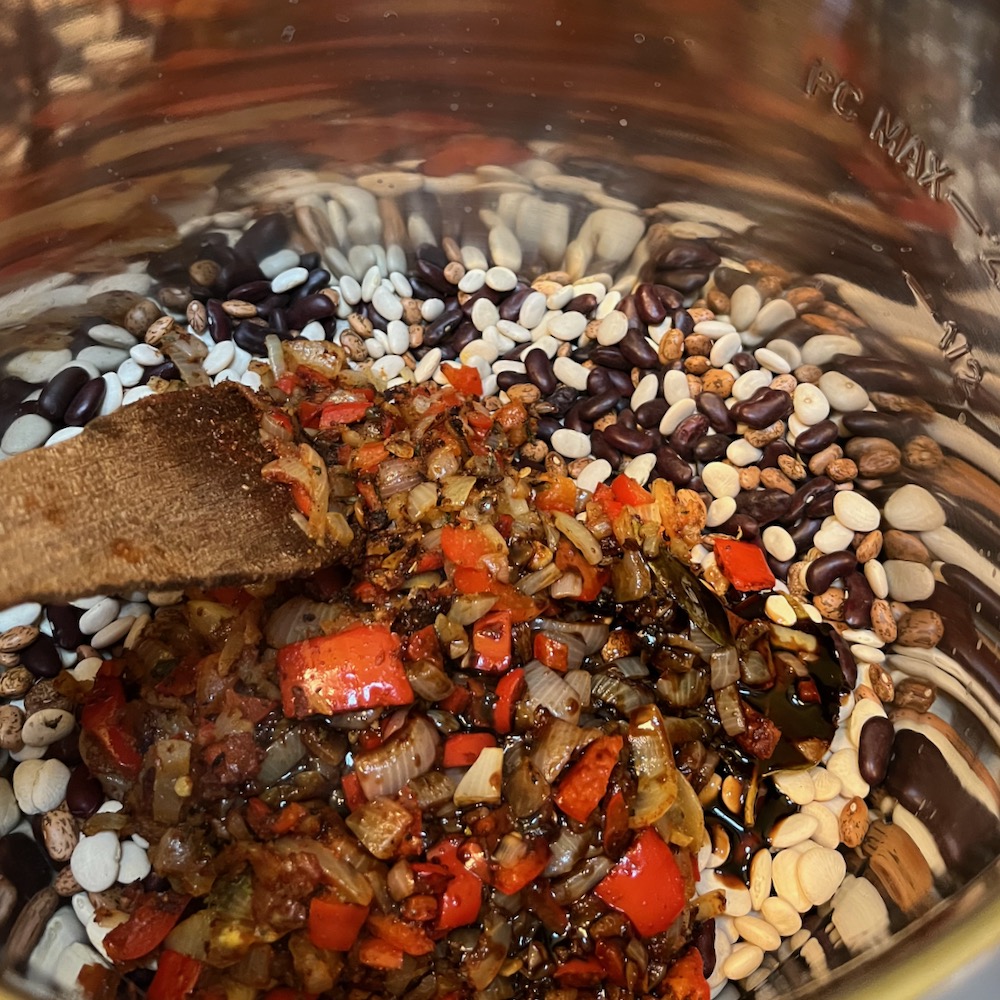In “Under Pressure,” Queen’s Freddie Mercury teams up with David Bowie to sing that “love dares you to change our way of caring about ourselves.” Changing is a challenge, even when I might care for myself and my family more efficiently by adopting something new. Two weeks ago I recounted my experience with a new air fryer, and subsequently receiving an Instant Pot from my husband Dave for Christmas. Well, this horse is heading for the hills on a new path as I learn how to make the most of my new gifts.
The Instant Pot is a multi-functional third-generation smart electric pressure cooker, and can be used to sauté, steam rice, cook beans, make yogurt, braise and more. It’s safer than its predecessors, with safety locks, digital readouts and a manual valve to release pressure when you need to jump the gun.
According to Britannica, the pressure cooker’s sealed chamber superheats water to create steam with a temperature as high as 266 F (130 C), well above boiling point, which you recall is 212 F (100 C). As a result, food cooks more quickly and its nutrients are preserved.
Read Also

Gentle treatments for pain in the neck
Heading toward year-end, people unknowingly tense up against the cold and busyness, causing neck pain that can often be treated with appropriate support and gentle mobility, athletic therapist Kathlyn Hossack says.
The first pressure cooker, called Papin’s Digester, was invented in 1679 by the French physicist Denis Papin. Charles Darwin referred to it in his 1835 book The Voyage of The Beagle, when he bemoaned the impossibility of cooking food in boiling water at high elevations in the republic of Mendoza (now Argentina). The new invention was not produced for sale for almost 200 years, when stovetop models were introduced in Germany and England. They subsequently made an appearance at the 1939 World’s Fair. After the Second World War, pressure cookers became popular with 1950s home cooks; second-gen stovetop models were used by one-third of North American households. But safety concerns diminished its popularity until the third generation — the Instant Pot and its cousins — appeared on the culinary landscape.
Which brings us to my kitchen: how useful can a smart pressure cooker be? The first dish I made was pork and beans, a staple in our home.
I used the Pot to sauté onions, garlic and aromatics, then added four varieties of (unsoaked) dried beans, a smoked pork hock, liquid (roasted tomato sauce, water) and seasonings. I closed the pot and set the timer. After 35 minutes, I toggled the release valve to depressurize so I could check on doneness: the kidney beans were still crunchy. I added 15 minutes to the timer, and afterward let the pressure self-release for two hours to extend the passive cooking time. Total time: 1 hour cooking + 2 hours steam release + 1 pot to wash.
In “real time” stovetop cooking, I cook the beans, and the hock — separately from the beans — then shred the meat. I sauté onions, garlic and aromatics, then add them plus the pork, its cooking water and seasonings to the cooked beans and simmer the whole shebang for an hour. Total time: 3 ½ to 4 hours + 3 pots to wash.
Clearly the Instant Pot is more efficient. But I work at home, so time has a different meaning than simple efficiency. Plus, I like to tinker with my food while it cooks — not easily done in a pressure cooker. In the future, I might use the Pot to cook the beans and pork hock, but I might transfer them to a stovetop pot, where I can tinker to my heart’s content. Or not.

Important things to attend to: do not fill the Pot past two-thirds, to allow space for steam generation. Use two cups of liquid per cup of dried beans — and remember that cooked beans expand! Salt the beans during cooking so they hold their shape, but do not add acid of any kind (lemon juice, vinegar) or the beans will not soften. (Add acid to taste at the end.) If the beans are underdone, turn the Pot back on and cook them longer. Clean everything, especially the gasket, after every use. Familiarize yourself with safety procedures in your operating manual.
Next time: making beef stock in the Instant Pot. But first we eat our beans, a lovely way to care for ourselves and our family.

Pressure cooker beans with smoked pork and smoked paprika
I have an 8-quart Instant Pot. If yours is 6 quarts, reduce the amount of beans and liquid. Add condiments from your fridge at will to season this pot.
Serves 8-12.
- 1 large onion, minced
- 1 head garlic, minced
- 1 red bell pepper, diced
- 2 Tbsp. olive oil
- 1 bay leaf
- 1 whole cinnamon stick
- 2-3 pods star anise
- 1 Tbsp. sweet paprika
- 2 tsp. smoked paprika
- 1 Tbsp. mixed dried basil, rosemary, theme, oregano
- 4 cups dried beans (Great Northern, pinto, baby lima, kidney)
- 2 c. roasted tomato sauce (link to Column, 21 September 2021)
- 6 c. hot water
- 1 smoked pork hock
- ¼ c. tomato paste or ketchup
- ¼ c. pomegranate molasses
- Salt and black pepper to taste
- Sriracha or hot sauce to taste
Put the onion, garlic, pepper, and oil in the Pot. Sauté for 10 minutes. Add remaining ingredients. Cover and cook on high pressure for 45 minutes. Use the steam release valve to depressurize, then taste the beans. If they are still crunchy, cook longer. Depressurize the Pot naturally. Adjust the seasoning before serving.















